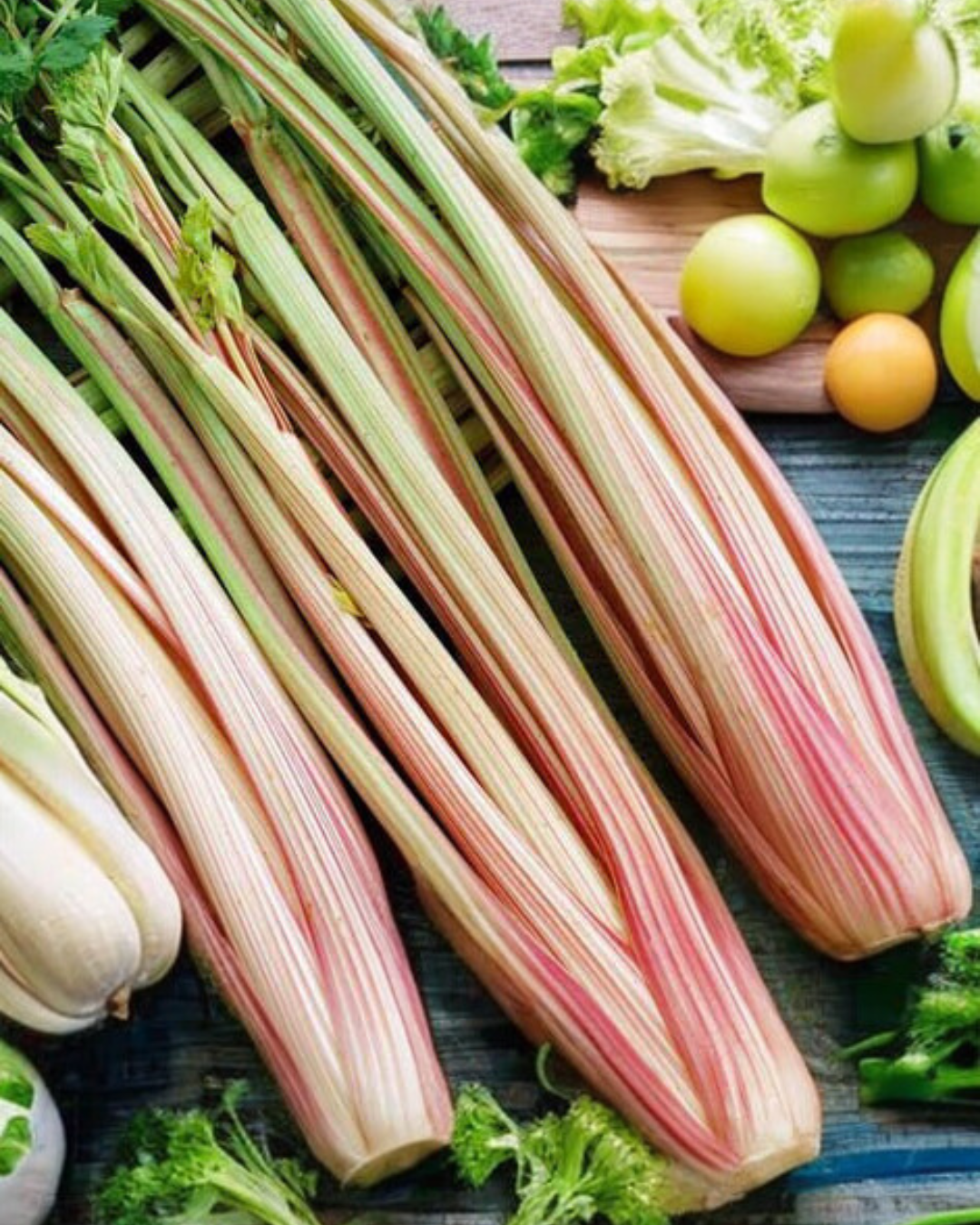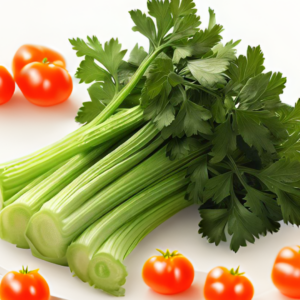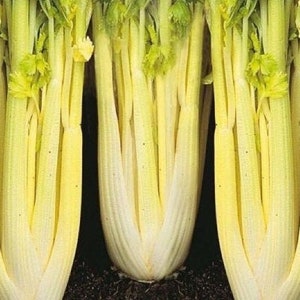Celery Peppermint Stick
1,000 د.ك
Celery Peppermint Stick. An attractive addition to any garden and salad bowl producing “Candy striped” spicy celery stalks that retain their colour even when cooked. The plants are fast growing, average 14-20 inch high with a true strong celery flavour and aroma. Packet 100 seeds
Cultivation Advice For Celery Peppermint Stick
- Celery prefers cooler temperatures for optimal growth. Start seeds indoors 10-12 / in July . Transplant seedlings outdoors once the soil has warmed up, typically after the danger of frost has passed.
- Plant Celery Peppermint Stick in well-draining, fertile soil. Incorporate organic matter such as compost or well-rotted manure into the soil to improve its structure and nutrient content.
- Germination Tips:Needs Light to germinate! Do Not cover with soil or other planting medium! 68-75 Degrees Fahrenheit
- Aim for a slightly acidic to neutral soil pH, ideally between 6.0 and 7.0. Celery tends to prefer soils that are not too acidic.
- Celery prefers full sun but can tolerate partial shade, especially in warmer climates. Ensure the plants receive at least 6-8 hours of direct sunlight daily.
- Keep the soil consistently moist. Celery requires a steady water supply to prevent the soil from drying out. Mulch around the plants to help retain soil moisture.
- Space Celery Peppermint Stick plants about 10 to 12 inches apart. Adequate spacing allows for air circulation and prevents overcrowding.
- Apply a layer of organic mulch around the plants to retain soil moisture, suppress weeds, and regulate soil temperature. Mulching also helps keep the soil cool.
- Celery is a heavy feeder. Before planting, amend the soil with a balanced fertilizer. Side-dress with additional fertilizer during the growing season to provide ongoing nutrients.
- Consider hilling or mounding soil around the base of the Celery Peppermint Stick plants. This helps with blanching and provides additional support.
- Blanching improves the flavor and tenderness of celery. About two weeks before harvest, gather the outer stalks and tie them together to exclude light. This encourages the inner stalks to remain pale and tender.
- Plant Celery Peppermint Stick alongside companion plants that benefit each other. Carrots, onions, and leeks are good companions for celery. Avoid planting celery near crops like beans and cabbage.
- Keep an eye out for common pests such as aphids, snails, and caterpillars. Consider using organic insecticides or neem oil to control pests. Companion planting with pest-repelling herbs may also be beneficial.
- Choose disease-resistant varieties of celery, including those resistant to common diseases such as Fusarium wilt or leaf spot.
- Harvest Celery Peppermint Stick when the stalks are about 8 to 12 inches tall. Cut the outer stalks first, leaving the inner stalks to continue growing. Harvest in the morning for the best flavor and crispness.
- Celery can be grown in containers if space is limited. Choose a large container with good drainage and use a high-quality potting mix.
- Ensure that the mulch layer is thick enough to retain moisture but avoid piling it directly against the celery stems. This helps prevent rot and disease while promoting a healthy root system.
- Celery plants can be sensitive to strong winds. Consider using windbreaks or planting taller crops around them to provide protection
- Harvest celery when the stalks reach the desired size. Regular harvesting encourages continuous growth and ensures optimal tenderness.
- For a unique flavor twist, try blending celery ‘Peppermint Stick’ with other aromatic herbs or vegetables in recipes. Its distinctive flavor can add depth to soups, stews, and sauces.
- When growing celery in containers, choose a container with sufficient depth to accommodate the long roots. Ensure the container has good drainage to prevent waterlogging.
- Apply compost or well-rotted manure around the base of the celery plants during the growing season. This provides a steady supply of nutrients for healthy development.
- If unexpected frosts occur, protect the celery plants with covers or cloths. Extreme cold can damage the leaves and affect the overall health of the plant.
- Regularly inspect your celery plants for any signs of diseases such as leaf spots or wilting. Early detection allows for timely intervention and better disease management.
- Consider companion planting with herbs like parsley, chives, or basil to enhance the flavor of celery. Some herbs may also act as natural repellents for pests.
- If slugs or snails are common in your area, use organic methods like diatomaceous earth or beer traps to protect celery from these pests.
- Ensure that the celery plants receive sufficient sunlight for healthy growth. While they can tolerate partial shade, optimal sun exposure contributes to better flavor development.
- If growing tall celery varieties, provide sturdy supports to prevent the plants from bending or toppling over, especially during heavy rain or winds.
- Explore various culinary uses for celery ‘Peppermint Stick.’ Its unique flavor can add interest to salads, snacks, and cooked dishes. Be creative and enjoy the versatility of this celery variety.
متوفر في المخزون






